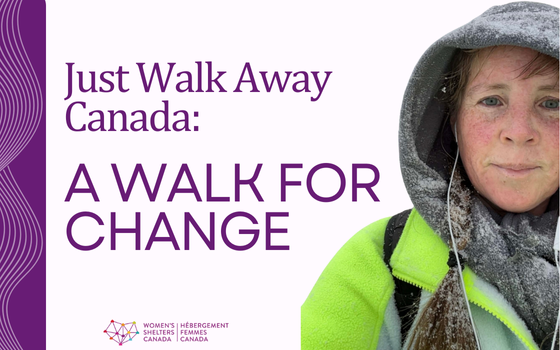For many women and children fleeing violence, the path to a safe, secure, and affordable home is becoming more difficult to navigate – and in many cases, it’s a path that leads nowhere at all. Intimate partner violence (IPV) is an epidemic that continues to worsen and is a leading cause of women’s homelessness. Every day, thousands of women, children, and families are forced to seek refuge from abuse. But what happens when the shelter they rely on has no room to take them in? Shelters in our network are unable to meet the growing demand for emergency accommodation and services in their communities.
Canada is experiencing an unprecedented housing crisis that compounds the challenge of finding safe, affordable homes for women escaping violence. According to Women’s Shelters Canada’s latest national report, Shelter Voices 2024: Crisis Within Crisis, 97% of shelters said it had become harder to find housing for women and children fleeing violence over the past year. A lack of affordable housing often leads to prolonged stays in emergency shelters, or even worse, being forced to choose between returning to their abuser’s home or facing homelessness. This is a choice that no one should have to make.
The housing crisis and the epidemic of gender-based violence are intrinsically linked, creating a cyclical pattern where each worsens the other. Breaking this cycle requires an intentional solution: the creation of more affordable safe spaces.
This is where second stage transitional housing (SSTH) comes in. SSTH was created to address the gap between emergency shelter and permanent housing by offering not just affordable transitional housing, but a comprehensive anti-violence program that is designed to help women and children transition safely to a life without violence. SSTH is more than just housing – it’s a vital service that combines stable living arrangements with the tools, resources, and ongoing support necessary for long-term healing and independence.
But when it comes to building SSTH for women and children fleeing violence, shelter organizations face unique hurdles that prevent them from building and expanding. Many sources of funding are out of reach; for example, many of the available grants for housing development are highly competitive, driven by the overwhelming need across the country. Granting streams for affordable housing in the past have been four- and five-times oversubscribed, underscoring the critical shortage of resources to build more affordable housing for not only women’s shelters but for all housing providers.
Not only is funding hard to secure, but most of these highly competitive granting programs aren’t designed with SSTH in mind. SSTH projects typically cost more because, naturally, it’s more expensive to build two-, three-, and four-bedroom units for an entire family than it is for one-bedroom units or studios. These are also projects with fewer units in a building; they’re not 100-unit multi-story apartment buildings. SSTH, by definition, need extra space to facilitate important programs that help women and children recover from and transition out of violence. These spaces, like children’s playrooms, community areas with kitchens, and cultural/prayer rooms, don’t generate any rental income, which makes the project more expensive to build and maintain. So, when funding programs are comparing apples and oranges, SSTH projects can’t compete.
Finally, loan programs aren’t always a viable option. Some shelters get money from their provincial or territorial government to cover everyday running costs. If this funding is not enough, or absent to begin with, shelters have to raise extra money through fundraising to keep their doors open. This leaves them with little to no funds to pay a mortgage in addition to their regular operational expenses. This is why grant-based funding, which doesn’t need to be paid back, is so important for building SSTH projects.
Due to all the above constraints, shelters are often forced to rely on a patchwork of funding sources – $25,000 here, $100,000 there – to pay for a multi-million-dollar project. This scattered approach not only makes the process more complicated, but it also takes an incredible amount of time and effort. For shelter organizations that are already stretched thin and doing life-saving work, this fragmented process is a huge barrier to expanding the housing continuum quickly enough to meet the growing demand.
To make a real difference, all levels of government must understand the unique challenges faced by shelters and take action to provide funding that supports the creation of more second stage transitional housing. The federal government should establish a dedicated grant-only capital funding program for women’s shelters or set aside a portion of existing funds specifically for women’s organizations building second stage transitional housing. At the same time, provincial and municipal governments must do their part. They need to provide both capital and operational funding, as well as offer free or affordable land. This support is essential to help shelters build and maintain this life-saving housing.
Together, these efforts can create safe, supportive homes for women in need, giving them the chance to build a brighter, violence-free future.
Megan Golfetto, WSC’s Project Coordinator





